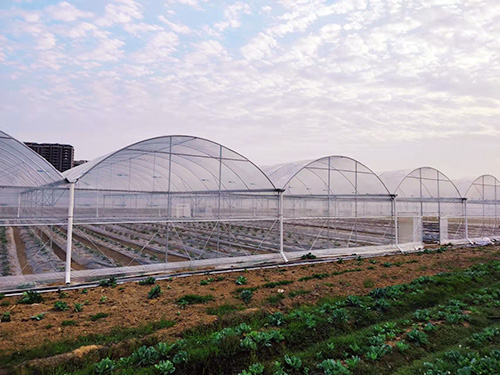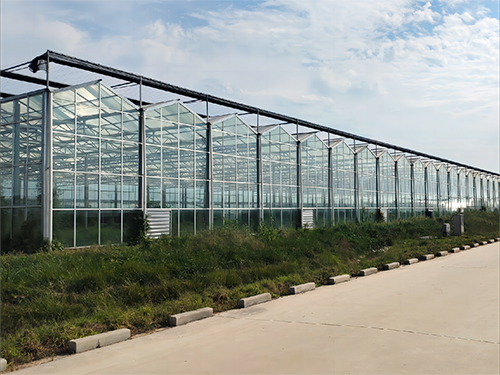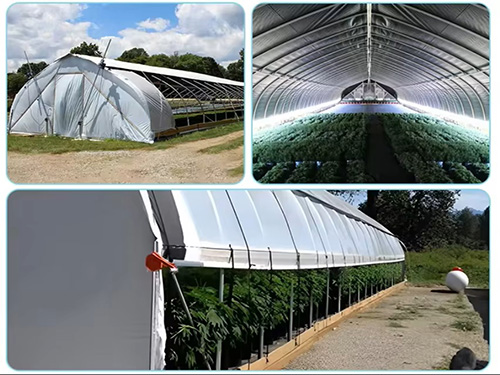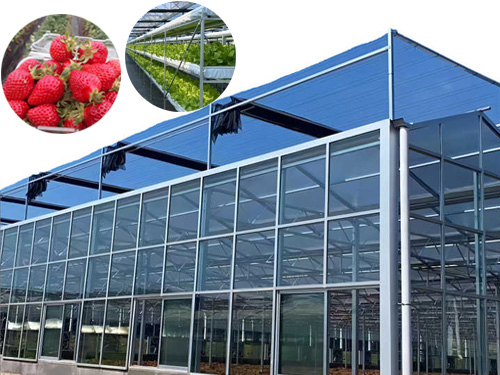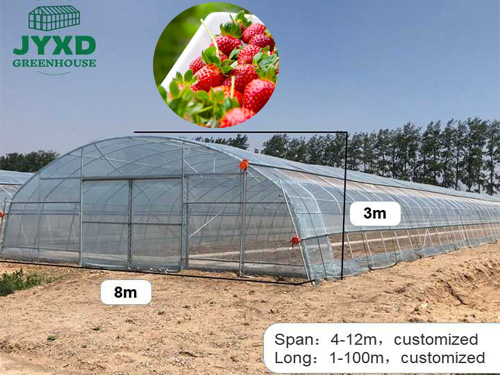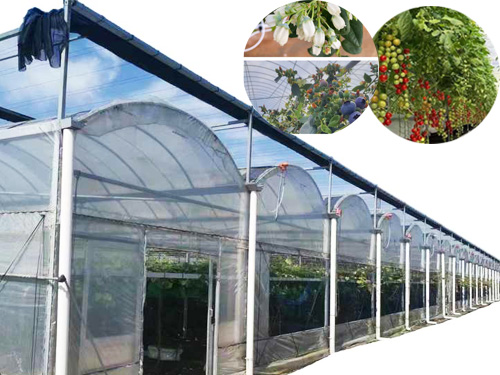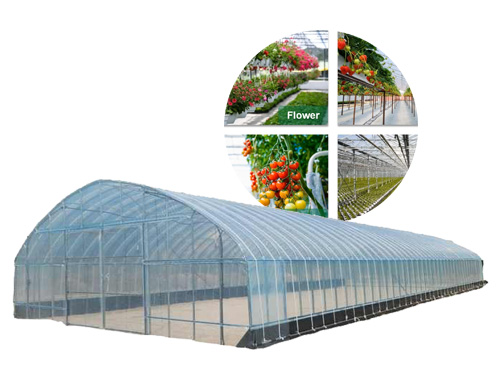NEWS DETAILS
NEWS INFORMATION
Riverside Greenhouse Operations: Flood Prevention & Irrigation Water Recycling Techniques
AUTHOR:jyxd-greenhouse DATE:2025-04-08 17:36:39 HITS:99
Riverside greenhouses offer unique advantages, such as access to abundant water resources and scenic locations. However, they also face challenges like flooding and water management inefficiencies. By implementing flood prevention measures and advanced irrigation water recycling techniques, growers can protect their operations, conserve resources, and maximize productivity. This article explores strategies for managing riverside greenhouses effectively, ensuring sustainable and profitable cultivation.
Why Riverside Greenhouse Operations Need Special Attention
Riverside greenhouses are vulnerable to specific risks:
· Flooding: Proximity to water bodies increases the risk of flooding during heavy rainfall or river overflow.
· Water Management: Efficient use of water resources is critical to prevent waste and ensure sustainability.
· Soil Erosion: Riverbanks can be prone to erosion, affecting greenhouse stability.
Addressing these challenges is essential for protecting investments and ensuring long-term success.
1. Flood Prevention Strategies for Riverside Greenhouses
Flooding can cause significant damage to greenhouses, crops, and equipment. Here are effective strategies to mitigate flood risks:
Elevated Structures:
· Raised Foundations: Build greenhouses on elevated platforms or stilts to keep them above potential flood levels.
· Flood Barriers: Install temporary or permanent barriers around the greenhouse to divert floodwaters.
Drainage Systems:
· French Drains: Use perforated pipes and gravel to create underground drainage systems that channel water away from the greenhouse.
· Surface Drains: Install gutters, downspouts, and surface channels to manage rainwater runoff.
Site Selection:
· Higher Ground: Choose locations on higher riverbanks or terraces to minimize flood risks.
· Floodplain Analysis: Conduct a flood risk assessment to understand historical flood patterns and plan accordingly.
Emergency Preparedness:
· Monitoring Systems: Install water level sensors and weather monitoring tools to receive early flood warnings.
· Contingency Plans: Develop and practice evacuation and crop protection plans for flood events.
2. Irrigation Water Recycling Techniques
Efficient water management is crucial for riverside greenhouses to conserve resources and reduce costs. Here are advanced techniques for recycling irrigation water:
Closed-Loop Irrigation Systems:
· Recirculation: Collect and reuse runoff water from irrigation, reducing the need for fresh water.
· Filtration: Use sand filters, UV sterilizers, or biofilters to remove contaminants and pathogens from recycled water.
Rainwater Harvesting:
· Collection Systems: Install gutters and storage tanks to capture rainwater for irrigation.
· Treatment: Use simple filtration methods to ensure rainwater is safe for plant use.
Drip Irrigation:
· Efficiency: Deliver water directly to plant roots, minimizing evaporation and runoff.
· Automation: Use timers and sensors to optimize water application based on plant needs.
Water Storage and Management:
· Reservoirs: Build on-site reservoirs to store recycled and harvested water.
· Monitoring: Track water usage and quality to ensure efficient and safe irrigation practices.
3. Combining Flood Prevention and Water Recycling
Integrating flood prevention and water recycling systems creates a resilient and sustainable riverside greenhouse operation. Here’s how:
Dual-Purpose Drainage:
· Water Collection: Design drainage systems to channel floodwaters into storage tanks for later irrigation use.
· Flood Diversion: Use reservoirs or ponds to temporarily store excess water during floods.
Modular Design:
· Flexible Systems: Build modular greenhouses and water management systems that can be adjusted based on seasonal water availability and flood risks.
Eco-Friendly Solutions:
· Natural Buffers: Plant vegetation along riverbanks to reduce erosion and absorb excess water.
· Permeable Surfaces: Use permeable materials for pathways and foundations to enhance water infiltration.
4. Benefits of Flood Prevention and Water Recycling
Implementing these strategies offers numerous advantages:
· Crop Protection: Minimize damage from floods, ensuring consistent yields.
· Resource Efficiency: Reduce water consumption and operational costs.
· Sustainability: Promote eco-friendly practices and conserve natural resources.
· Resilience: Build systems that adapt to changing weather patterns and water availability.
5. Case Studies: Successful Riverside Greenhouse Operations
Greenhouse in the Netherlands:
· Challenge: Frequent flooding from nearby rivers.
· Solution: Elevated greenhouses with closed-loop irrigation systems reduced flood risks and water usage by 40%.
Farm in Bangladesh:
· Challenge: Monsoon rains and river overflow.
· Solution: Flood barriers and rainwater harvesting systems protected crops and provided irrigation water during dry seasons.
Operation in California:
· Challenge: Drought and occasional flash floods.
· Solution: Combined drip irrigation and water storage reservoirs ensured efficient water use and flood mitigation.
6. Best Practices for Riverside Greenhouse Management
To maximize the success of your riverside greenhouse, follow these best practices:
Regular Maintenance:
· Inspect Structures: Check foundations, barriers, and drainage systems regularly for damage or wear.
· Clean Filters: Maintain filtration systems to ensure water quality.
Monitor Conditions:
· Weather Alerts: Stay informed about weather forecasts and river levels.
· Water Quality: Test recycled and harvested water to ensure it meets plant needs.
Invest in Technology:
· Automation: Use sensors and automated systems for flood prevention and irrigation management.
· Data Analysis: Track environmental data to optimize operations and reduce risks.
Engage the Community:
· Local Partnerships: Collaborate with neighboring farms or communities to share resources and knowledge.
· Education: Offer workshops on sustainable practices to promote eco-friendly agriculture.
Conclusion
Riverside greenhouse operations can thrive despite the challenges of flooding and water management by implementing flood prevention strategies and advanced irrigation water recycling techniques. By protecting crops, conserving resources, and building resilient systems, growers can ensure sustainable and profitable cultivation. Whether you’re a small-scale farmer or a commercial operator, these strategies will help you make the most of your riverside location.
For more expert tips and high-quality greenhouse solutions, visit our website and take your farming practices to the next level. Let’s grow smarter and cultivate a greener future together!
![]()
Meta Description: Learn how to manage riverside greenhouse operations with flood prevention and irrigation water recycling techniques. Protect crops and conserve resources for sustainable cultivation.
Hebei Juyou Xinda Greenhouse Facilities Co.,Ltd.
Copyright © 2024-2025 https://www.jyxd-greenhouse.com. All Rights Reserved Hebei Juyou Xinda Greenhouse Facilities Co.,Ltd.Copyright





 Current Location:
Current Location: